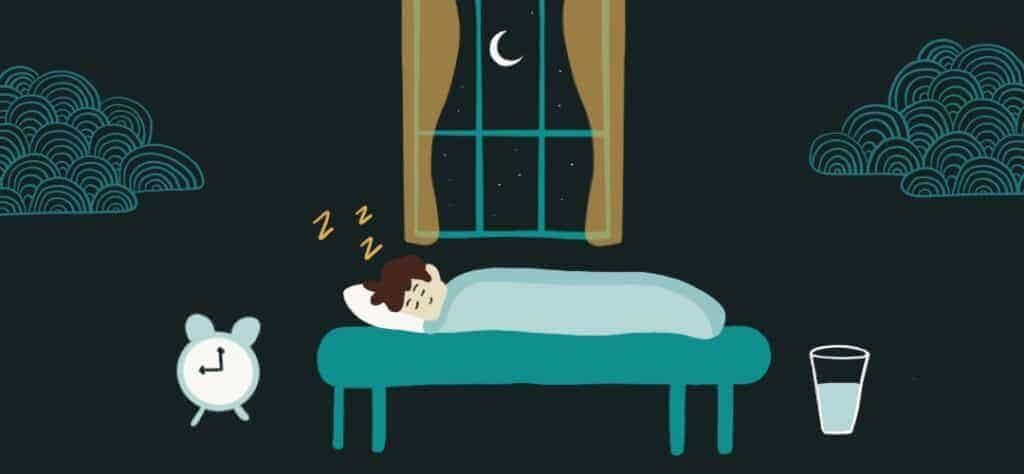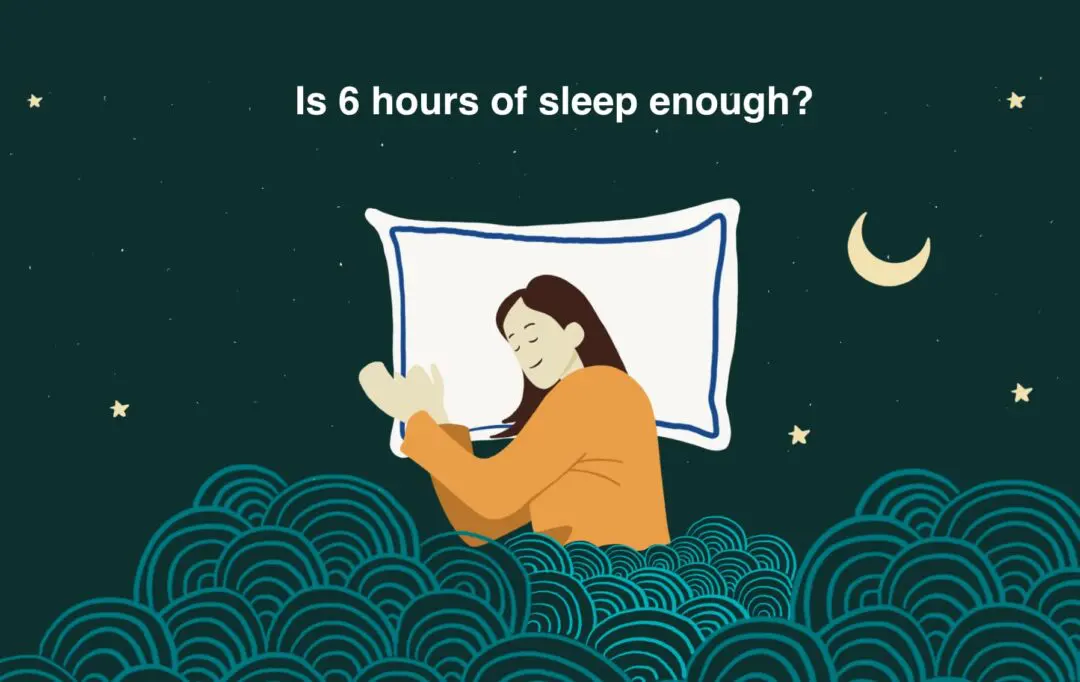What Side Should You Sleep On
Share
Fact checked
Reviewed by experts
Updated
December 15, 2022
Quick read
6 mins to read
List of Content
Sleeping in the improper posture may affect your spine and body in ways that are hazardous to your health. This is referred to as a terrible sleeping posture. These postures are more harmful than beneficial. The optimal sleeping posture is one that supports proper spinal alignment and appropriately distributes body weight. It’s also important to consider which comforts you. Some individuals choose different sleeping sides like, sleep on their stomachs, while others sleep on their sides. To sleep well, you must be in a comfy sleeping position. So the question of what side you should sleep on will be answered here.
Some sleeping sides are beneficial to one’s health. They assist in appropriately aligning the bones as you sleep and distributing tissue weight equally throughout the body.
We’ll look at what sleep position means, how to sleep well, sleeping sides for sciatica, pregnancy, and more in this post.
Benefits of Sleeping On Your Side
While resting on your back has traditionally been regarded to be the best sleeping posture, studies suggest that sleeping on your side offers just as many advantages.
Sleeping on your side, when done properly with proper body alignment, can help with joint and low back discomfort, as well as chronic pain from long-term diseases like fibromyalgia. Lessen snoring, a frequent sign of obstructive sleep apnea, is another plus point of sleeping on your side.
Helps in back pain relief
Sleeping on your backside has health advantages. You’re less prone to develop neck pain since your head, neck, and back are in a neutral posture. The greatest resting posture for heartburn is on your back with your body slightly raised and a little cushion between your knees.
Reduced risk of snoring
The log position involves sleeping on one’s side with one’s arms straight next to their torso. Approximately 15% of the population sleeps like a log. If you snore, this sleep position may be beneficial, however if you have arthritis, you could wake up in discomfort.
Improved Gut Health
Finally, if you sleep on your side, your gut health may improve. This posture improves the operation of your digestive system, which can assist with gastrointestinal ailments including heartburn, constipation, and discomfort.
Healthier Pregnancy
We sleep in various positions as children, but as we become older, we develop a predilection for side sleeping. This is the most typical sleeping position for adults. This is the posture in which about 60% of individuals sleep. This posture does not cause back discomfort, but it might be unsettling for persons who suffer from acid reflux and can even create heartburn. This position is perfect for expecting mothers.
Which Side Is Best to Sleep On?
If you have heart failure
Congestive heart failure patients should avoid resting on their backs and left sides. In certain positions, their heartbeats may wake them up. These individuals like to sleep on their right side. In addition, sleeping on one’s right side may help prevent additional health problems in those with heart failure.
If you are pregnant
Sleeping on your belly or back will be hard or impossible if you are pregnant. Laying on your side is the most comfortable position for you. To improve blood flow for both you and your baby, favor the left side. Back discomfort might be relieved by placing a body cushion or pillows under your stomach. To make yourself even more comfortable, place another cushion between your thighs and bend your knees.
If you have heartburn
Acid reflux may be incredibly uncomfortable, and if you sleep in the incorrect direction, it can get even worse. Knowing how to sleep in the appropriate position will only help you reduce acid reflux. Because the esophagus is correctly relaxed when sleeping on the left side, acid reflux is reduced.
This is one of the finest sleeping positions available. Sleeping in different positions, including sleeping on your back, may aggravate GERD.
Drawbacks of sleeping on your side
Laying on your side has a number of disadvantages alongside its advantages. One crucial one of which is:
An Increased Chance of Shoulder Discomfort or mis-alignment
Whether you sleep on your left or right side, the matching shoulder might sink into the mattress and up into your neck, causing misalignment and soreness in the morning. A solid mattress and pillow, and also keeping your head upright and in alignment with your shoulders, can help reduce this risk.
But, it is notable that if you sleep on your side, particularly if you suffer from chronic back discomfort or sleep apnea, it is only going to benefit you. Nonetheless, to avoid discomfort in other parts of your body, your body may desire diversity throughout the night. Beginning on one side and then switching to the other could be an option.
It’s also crucial to maintain your head high on the cushion and be aware of your chin location. Neck discomfort can be caused by tucking your chin into your chest or may even lead to unnecessary snoring across the night. This could be displeasing to your sleeping partner.
Tips for side sleeping
Whether you’re a seasoned side sleeper or brand new to the position, it’s critical to understand how to do it correctly. You can get the most from this resting position without waking up in agony and pain the next morning if you do it this way:
Tip 1. Place one firm pillow behind your head and lie down on a moderate mattress.
Tip 2. shift to your left side. Your chin should be neutral, and your ears should be in alignment with your shoulders. Keep your head up and also don’t tuck your chin down your chest.
Tip 3. Place your arms and hands parallel to the sides and underneath your face and neck.
Tip 4. Between your knees, place a firm cushion (especially if you have low back pain). This helps to avoid the fall of hip and knee joints, resulting in improved spine alignment.
Tip 5. To ease strain on your back, slightly raise your legs toward your chest.
When to Consider a Different Sleeping Position
- If sleeping on your side isn’t comfortable for you, start sleeping on your back rather. Back sleeping has a number of potential advantages, including back pain alleviation, particularly when combined with side sleeping.
- A thinner pillow may assist support your new sleep posture if you transition from side to back sleeping. While side sleepers want a high loft pillow, back sleepers prefer a medium loft – a pillow that is tall enough just to give neck cushioning but not so high that it leads their chin to lean forward into their chest.
- While side sleeping has a number of advantages, there are two major problems that may be best addressed by sleeping in a different position: wrinkles and shoulder discomfort. If you’re concerned about wrinkles, keep in mind that lying on your side and your face flat against the pillow compresses and stresses your skin, causing wrinkles. Lying down relieves the pressure that causes wrinkles.
Because you’re putting additional pressure on the shoulder that’s facing the mattress while you sleep on your side, it might cause or aggravate shoulder pain. Alternate between sides to reduce your chance of shoulder soreness.
- It may also assist to maintain your head and neck positioned equally with both shoulders, and to sleep on a firm mattress and pillow that does not allow you to sink too far into the mattress.
Although lying on your side might help you sleep deeper, isn’t for everyone. Consult your doctor if you notice any pain and distress after sleeping in this posture.
Conclusion
Sleeping on your side, with proper posture, may be beneficial to both your body and mind. If your discomfort persists, you may want to try replacing your bed and pillows for greater support.
If you still have persistent pain after making these modifications, consult a doctor or chiropractor.
FAQs
Laying on your left side is regarded to provide the greatest health advantages. Nonetheless, both sides can help with sleep apnea and persistent lower back pain alleviation. You shouldn’t have to commit to one side for the entire evening. Start with your left side and notice how your body responds.
The greatest direction to sleep in, according to old traditions like vastu shastra, is toward the south. Some new studies also back up this hypothesis. This implies that while you’re lying in bed, your head should be facing south and your feet should be facing north.
Although laying on your left side might alter the electrical activity of your heart, there is no evidence that it raises your chance of acquiring a cardiac issue if you don’t have one already.
Lying on your right side, according to some sleep specialists, may constrict your vena cava. That’s the vein that leads to your heart’s right side. However, there is no data that lying on your right side enhances your risk of heart failure at this time, and it appears to be safe.
Preventing wrinkles is one of the advantages of lying on your back. Sleeping on your stomach or sideways might cause wrinkles to appear. Enjoy sleeping on your back to avoid wrinkles.
Sleeping on one’s side can assist with respiratory problems. To open your airways, place a cushion between your knees and beneath your neck.
This website does not offer medical advice nor professional medical services; rather, it is provided solely for educational, informational, and/or entertainment purposes. Individuals seeking medical advice should consult a licensed physician. The information provided should not be used for diagnosis or treatment of any condition, disease, or injury. When you have a medical condition, you should always talk to licensed doctor or other certified medical professional. You should never delay seeking professional medical advice or treatment based on the contents of this website. Call 911 or immediately go to the nearest emergency room if you think you may have a medical emergency. The contents of this website are provided “as-is”, Sleep Authority and its parent, subsidiaries, affiliates, employees, contributors disclaim any warranty of the information contained herein. Please contact using contact form to report any errors, omissions, misinformation, or abuse.
Sleep Authority is brought to you by Resident, the company that brings you Nectar, DreamCloud, Awara, Wovenly, Bundle, Home Well Designed and Level Sleep.










